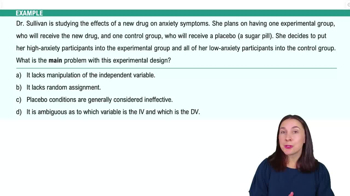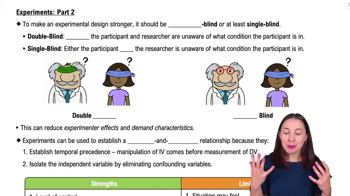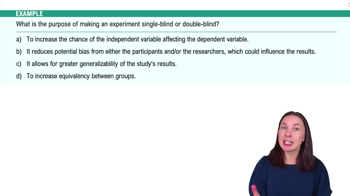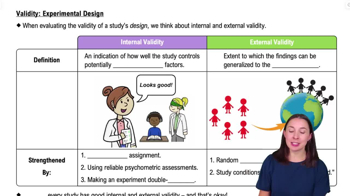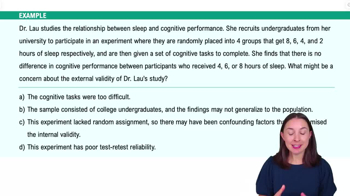Table of contents
- 1. Introduction to Psychology1h 43m
- 2. Psychology Research2h 20m
- 3. Biological Psychology2h 41m
- 4. Sensation and Perception28m
- 5. Consciousness and Sleep32m
- 6. Learning41m
- 7. Memory34m
- 8. Cognition37m
- 9. Emotion and Motivation35m
- 10. Developmental Psychology33m
- 11. Personality48m
- 12. Social Psychology41m
- 13. Stress and Health41m
- 14. Psychological Disorders44m
- 15. Treatment47m
2. Psychology Research
Intro to Research Methods
Struggling with Psychology?
Join thousands of students who trust us to help them ace their exams!Watch the first videoMultiple Choice
Adam wants to feel happier. According to the facial feedback hypothesis, what should Adam do?
A
Go hang out with some friends.
B
Go to a batting cage and hit some baseballs as hard as he can.
C
Smile more.
D
Listen to soothing music.
 Verified step by step guidance
Verified step by step guidance1
Understand the facial feedback hypothesis: This hypothesis suggests that facial expressions can influence emotional experiences. For example, smiling can make you feel happier.
Identify the key action related to the hypothesis: In this context, the action is 'smile more,' which aligns with the facial feedback hypothesis.
Consider the options provided: Evaluate each option to see which one directly involves changing facial expressions.
Recognize that 'smile more' is the action that directly involves facial expressions, which is central to the facial feedback hypothesis.
Conclude that by smiling more, Adam can potentially enhance his feelings of happiness, as suggested by the facial feedback hypothesis.

 1:46m
1:46mWatch next
Master Roadmap of the Lesson with a bite sized video explanation from Hannah Gordils
Start learningRelated Videos
Related Practice










